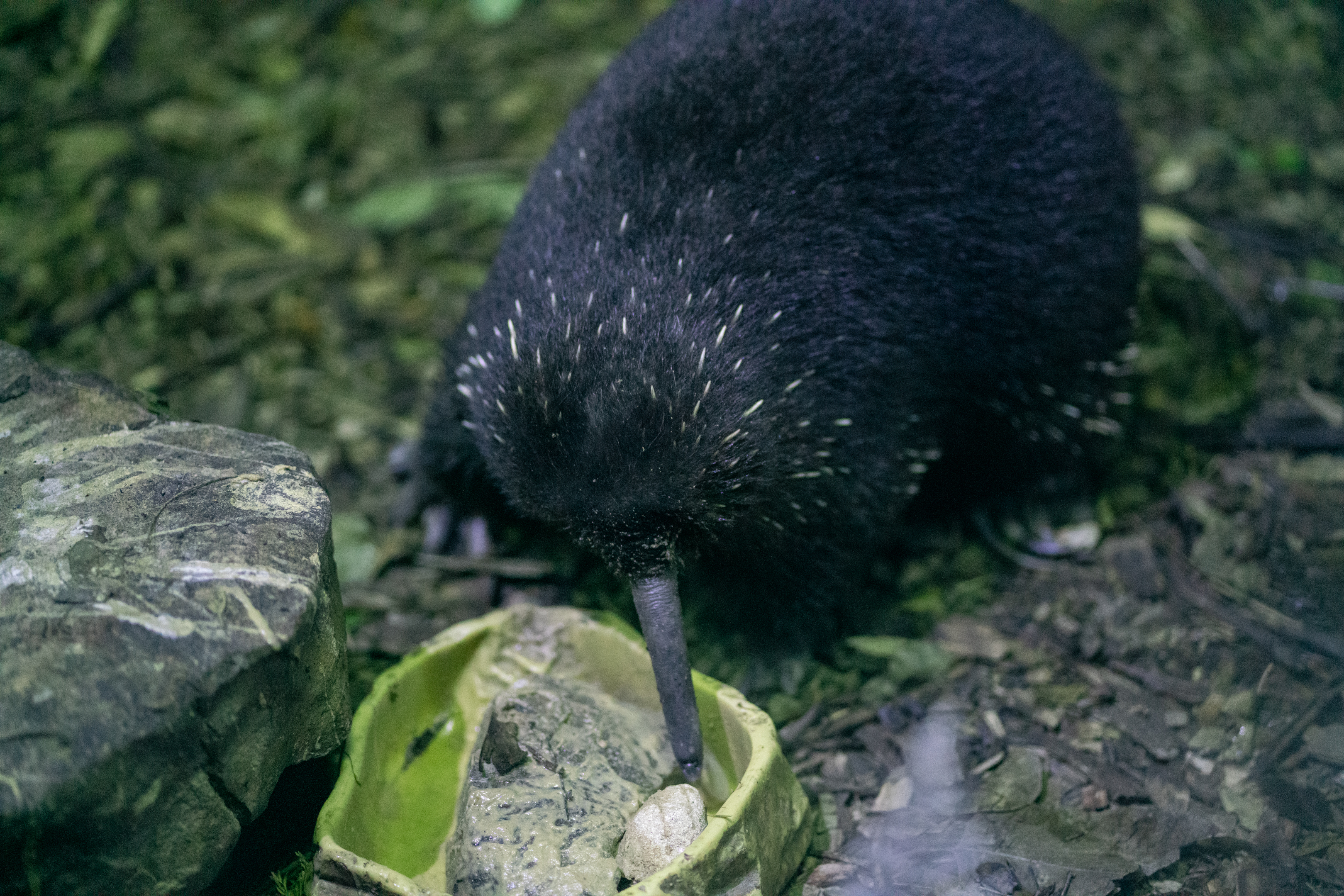Western long-beaked echidna
(Zaglossus bruijni)

Description
The western long-beaked echidna (Zaglossus bruijnii) is one of the four extant echidnas and one of three species of Zaglossus that occur in New Guinea. Originally described as Tachyglossus bruijnii, this is the type species of Zaglossus. The western long-beaked echidna is an egg-laying mammal. Unlike the short-beaked echidna, which eats ants and termites, the long-beaked species eats earthworms. The long-beaked echidna is also larger than the short-beaked species, reaching up to 16.5 kilograms (36 lb); the snout is longer and turns downward; and the spines are almost indistinguishable from the long fur. It is distinguished from the other Zaglossus species by the number of claws on the fore and hind feet: three (rarely four). It is the largest extant monotreme. The species is found in the Bird's Head Peninsula and Foja Mountains of West Papua and Papua provinces, Indonesia, respectively, in regions of elevation between 1,300 and 4,000 metres (4,300 and 13,100 ft); it is absent from the southern lowlands and north coast. Its preferred habitats are alpine meadow and humid montane forests. The Tring Collection of the British Museum of Natural History includes a western long-beaked echidna, with a collection label noting its collection by John T. Tunney in 1901. Curiously, the location of collection is noted as Mount Anderson, in the Kimberley region of north-west Australia. However, this species is otherwise thought to be extinct for millennia in Australia; the only other specimens of Zaglossus from Australia are fossils dated to the Pleistocene period. It was presumed that the specimen was in fact collected from elsewhere and inadvertently attached to a Tunney collection label. Thus, the specimen received no further attention for many years. A study by Helgen et al. (2012) examined the specimen and considered various aspects including the circumstantial improbability of a collection label misassignment, the uniqueness of ectoparasites found on the specimen, the similarity of some Kimberly forests to known habitat in New Guinea, an indigenous cave painting appearing to depict a long-beaked echidna, and the testimony of an Aboriginal elder. The study concludes that the specimen likely was collected in Australia as stated on the label.
Taxonomic tree:







